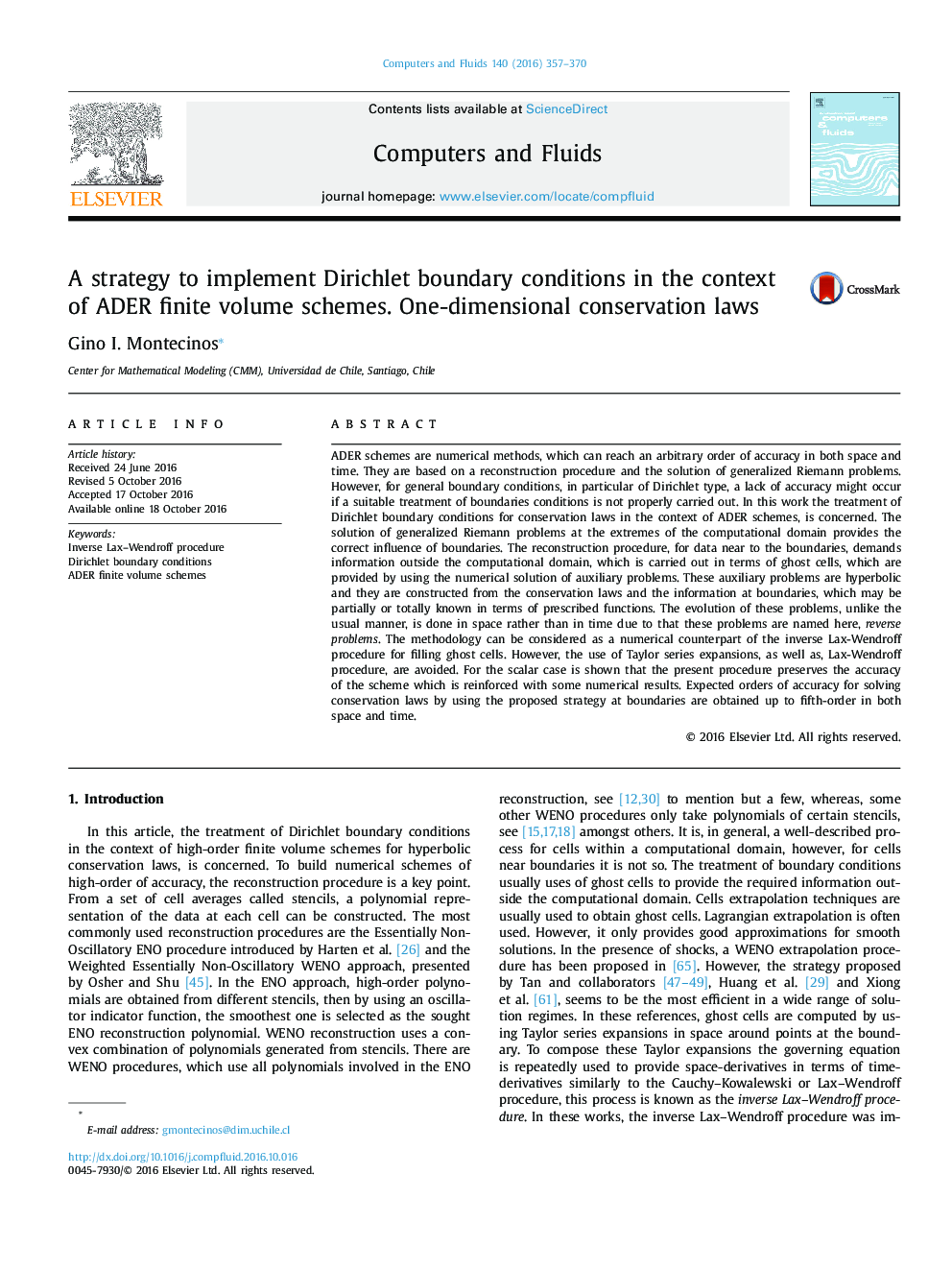| کد مقاله | کد نشریه | سال انتشار | مقاله انگلیسی | نسخه تمام متن |
|---|---|---|---|---|
| 5012059 | 1462671 | 2016 | 14 صفحه PDF | دانلود رایگان |

- The treatment of Dirichlet boundary conditions for conservation laws in the context of ADER schemes is presented. The present strategy allows to carry out the reconstruction procedure for cells near to the extremes of the computational domain, by using ghost cells. Additionally, it provides vector states at boundaries, which allow to build Riemann problem, as usual, to incorporate correctly the influence of boundaries.
- In general, it is assumed that information at boundary is known in terms of prescribed functions. However, if that information is not prescribed or it is just partially available, as for outflows. Then, it is presented a strategy to provide a such information.
- Ghost cells are computed as the solution of auxiliary problem, which are defined to evolve in space rather than in time, due to that, these are called here, reverse problems. These are constructed from the conservation laws and the information at boundaries given in terms of prescribed functions. This procedure can be seen as the numerical version of the inverse Lax-Wendroff procedure. But, no Taylor expansions and Cauchy-Kowalewskaya procedure, are required.
- Reverse problems are defined at the extremes of the computational domain and they are solved with a low order scheme, which is independent of the numerical scheme used to solve the conservation laws. We have find a criterion to choose the discretization of reverse problem in order to guarantee that both scheme for conservation laws and reverse problems are stable.
- Numerical evidence shows that, a second order method for reverse problems allows to achieve up to fifth order of accuracy in both space and time for solving conservation laws. The CPU time of the global scheme is comparable with those using the inverse Lax-Wendroff procedure to deal with boundary conditions.
ADER schemes are numerical methods, which can reach an arbitrary order of accuracy in both space and time. They are based on a reconstruction procedure and the solution of generalized Riemann problems. However, for general boundary conditions, in particular of Dirichlet type, a lack of accuracy might occur if a suitable treatment of boundaries conditions is not properly carried out. In this work the treatment of Dirichlet boundary conditions for conservation laws in the context of ADER schemes, is concerned. The solution of generalized Riemann problems at the extremes of the computational domain provides the correct influence of boundaries. The reconstruction procedure, for data near to the boundaries, demands information outside the computational domain, which is carried out in terms of ghost cells, which are provided by using the numerical solution of auxiliary problems. These auxiliary problems are hyperbolic and they are constructed from the conservation laws and the information at boundaries, which may be partially or totally known in terms of prescribed functions. The evolution of these problems, unlike the usual manner, is done in space rather than in time due to that these problems are named here, reverse problems. The methodology can be considered as a numerical counterpart of the inverse Lax-Wendroff procedure for filling ghost cells. However, the use of Taylor series expansions, as well as, Lax-Wendroff procedure, are avoided. For the scalar case is shown that the present procedure preserves the accuracy of the scheme which is reinforced with some numerical results. Expected orders of accuracy for solving conservation laws by using the proposed strategy at boundaries are obtained up to fifth-order in both space and time.
Journal: Computers & Fluids - Volume 140, 25 November 2016, Pages 357-370